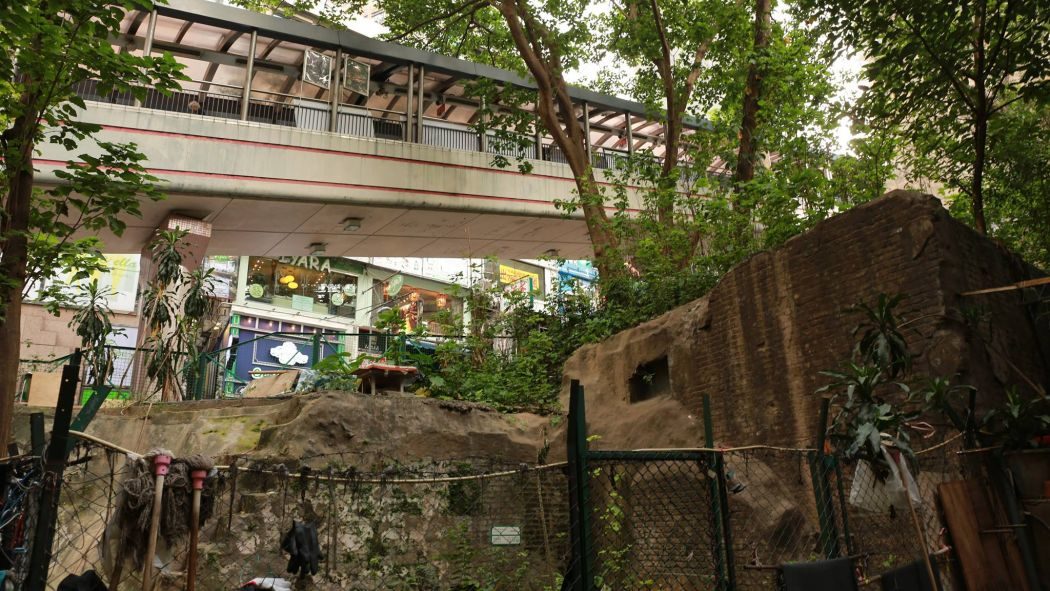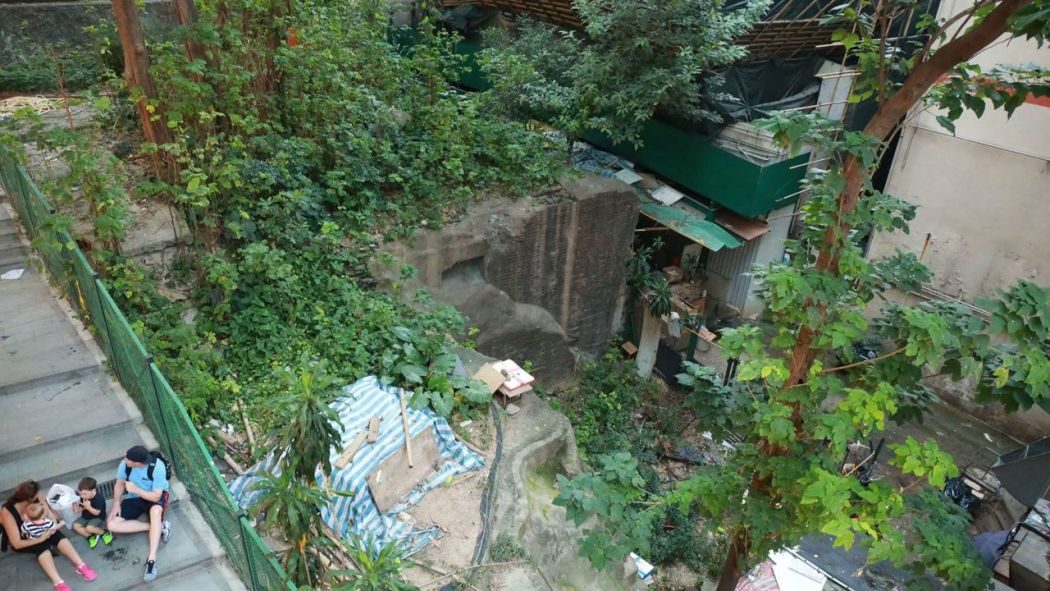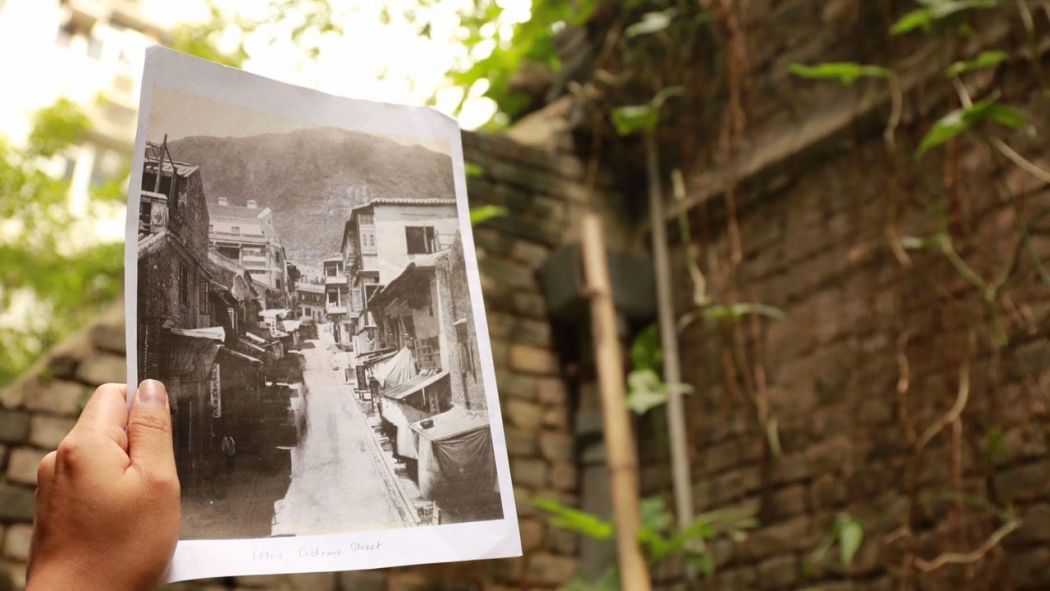Heritage advocates have slammed the Urban Renewal Authority (URA) for not fully assessing the remains of 137-year-old buildings in Central before putting forward a proposal to dismantle and then reassemble them into a wall.
The remains, located on Cochrane Street next to the Mid-Levels escalator, are believed to belong to ten tenement buildings or tong lau built between 1879 and 1880. The URA’s proposal is part of the Peel Street/Graham Street redevelopment project that commenced in 2007.

Safety concerns
The URA earlier proposed reassembling the parts on the same site after dismantling them, citing safety concerns. The reassembled structure would be turned into a wall running parallel to the pavement.
But Katty Law of the Central and Western Concern Group said on Monday that the Lands Department and the Geotechnical Engineering Office had both confirmed that the impugned remains do not pose any imminent danger, and that the government conducts assessments every year to ensure the site is safe, Apple Daily reported.
Ming Pao, citing government data, reported that the structures were last checked two months ago and no safety issue was raised.
The URA admitted that the consulting firm it hired made preliminary assessments mainly based only on observations. It concluded that the site met only a third of safety standards, making preservation infeasible.

‘Lego bricks’
Law also said the URA had only applied for permission to enter the structures for inspection last week, and criticised the URA for putting forward the proposal before obtaining permission to access the site and fully assess whether preservation was feasible.
Law added that the URA treated the old remains like “Lego bricks” and ignores the connection between the structures and the local community.
URA Executive Director Michael Ma Chiu-tsee said on Monday that “there is no need to preserve every brick and stone” and that the authorities “cannot just take into account the opinion of a minority.”
Ma said that in addition to safety reasons, it is not feasible to preserve the remains because they are not an archaeological site or a declared monument.

“If we are to preserve the remains on the same site, they will need a higher grading [of historical value],” the director said. “Isn’t it better than nothing to convert [it] into a museum? Pedestrians passing by the remains don’t even know what they are.”
Lam countered that the assessment of the site’s historical value was under progress, and that the URA should wait for the result before deciding whether to dismantle the site.

The Concern Group is of the view that preserving the structures on the same site is technically feasible, and is a better method of highlighting the historical significance of the relics.
‘Worth preserving’
Under the current proposal, the 137-year-old structures, which are 34 metres long and four metres high, will be reassembled using salvaged bricks into a smaller wall, about 12 metres long and three metres high.
In July, Professor Ho Pui-yin of CUHK’s Research Centre for Hong Kong Histories and Humanities conducted a two-month street survey on the Cochrane Street remains. About 61 per cent of 1,075 respondents said that the structures were “worth preserving.”
In September, the Antiquities Advisory Board decided to assess the century-old remains after receiving feedback from the Antiquities and Monuments Office and advocacy groups.
The Peel Street/Graham Street redevelopment plan will turn a total site area of 5,330 square metre into residential and commercial areas, hotels, shops and community facilities. The first phase, including a residential block, is estimated to be completed by 2017, and the second phase by 2021.
Thirty-seven buildings are expected to be affected, four of which were constructed prior to World War II.
